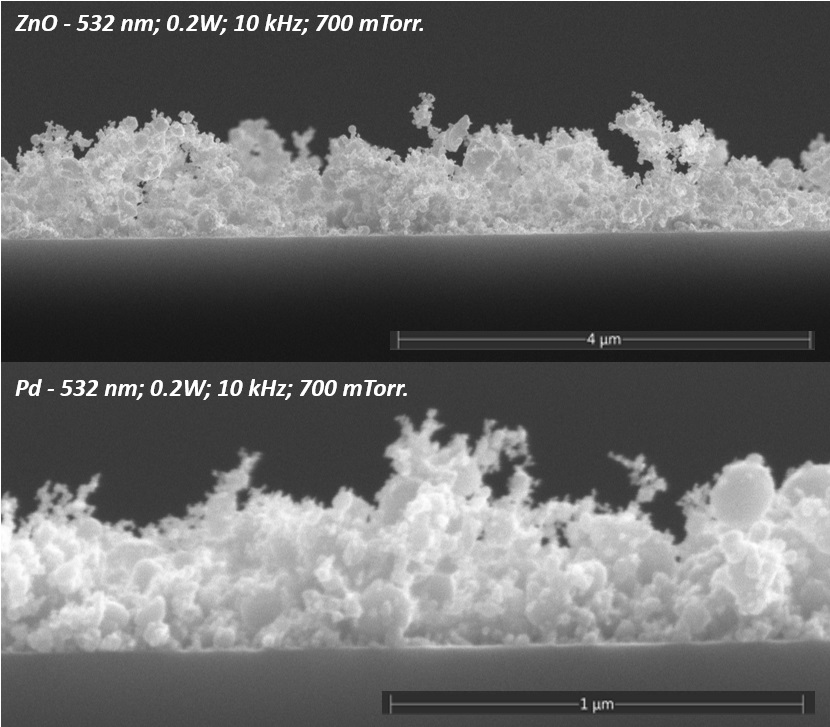Highly Sensitive Room-Temperature Surface Acoustic Wave
Hydrogen Sensors based on bilayer Nanoporous Films
 |
Project results : |
2020 In this research stage, porous bilayer Pd/ZnO films were deposited by means of the laser ablation method in various experimental conditions, using a laser with picosecond (ps) pulse durations. 2021 The aim of this stage of the project consists in the morpho-structural and acousto-electrical characterization of the bilayer porous Pd/ZnO films deposited by PLD (Pulsed Laser Deposition). The films were morphologically characterized by scanning electron microscopy (SEM) and by profilometry in order to determine roughness. The structure of the films was analysed by X-ray diffraction (XRD). From a compositional point of view, Pd/ZnO films were characterized by energy dispersive X-ray spectroscopy (EDS). The acousto-electrical properties of the films were also determined. It has been observed that the gas pressure, the laser power and the pulse duration are the parameters of the sensitive films that strongly influence the morphology. The degree of porosity of the films increases with deposition pressure and laser power. Depositions made with a laser with ps pulse duration are more porous than those using a ns laser. There was an increase in roughness as the gas pressure increased. X-ray diffraction for ZnO indicated that the stoichiometry of the oxide target was maintained. EDS maps confirmed the uniformity of ZnO and Pd deposits for bilayer films. By determining the conductivity of the Pd films, it was confirmed that the acousto-electrical properties are influenced by the degree of porosity of the films: the more porous the films, the lower the conductivity. From the analysis of the signal-to-noise ratio, it was observed that with the increase of the deposition pressure from 100 to 700 mTorr, the noise level doubles. The activities of this research stage have thus been fulfilled, and the premises for the realization of the next stage of the project have been created. 2022 In order to attain the objectives of the project, some of the films which were deposited and studied in previous stages were deposited onto SAW sensors and tested using various H2 concentrations. The films chosen for the tested sensors had morphologies that presented clear differences in morphology, as revealed by SEM images. The film deposition conditions which were varied were gas pressure in the deposition chamber, and laser wavelength. Sensor performances are not only evaluated based on sensitivity and LOD (limit of detection), but also based on response and recovery times, selectivity, reproducibility, repeatability, as well as stability to environmental factors. Taking all these characteristics in consideration, depending on the application considered, we can establish the optimum deposition conditions for the sensor. For example, in the case of H2 sensors, in addition to LOD and selectivity, response time is extremely important, since H2 molecules are very small and spread quickly in the environment and in various materials. In order to achieve validation in laboratory conditions, the components of the sensitive SAW platform were integrated and tested at temperatures between 20 and 40 °C, humidity of 20 to 80 %, and H2 concentrations between 0.2 and 2%. |